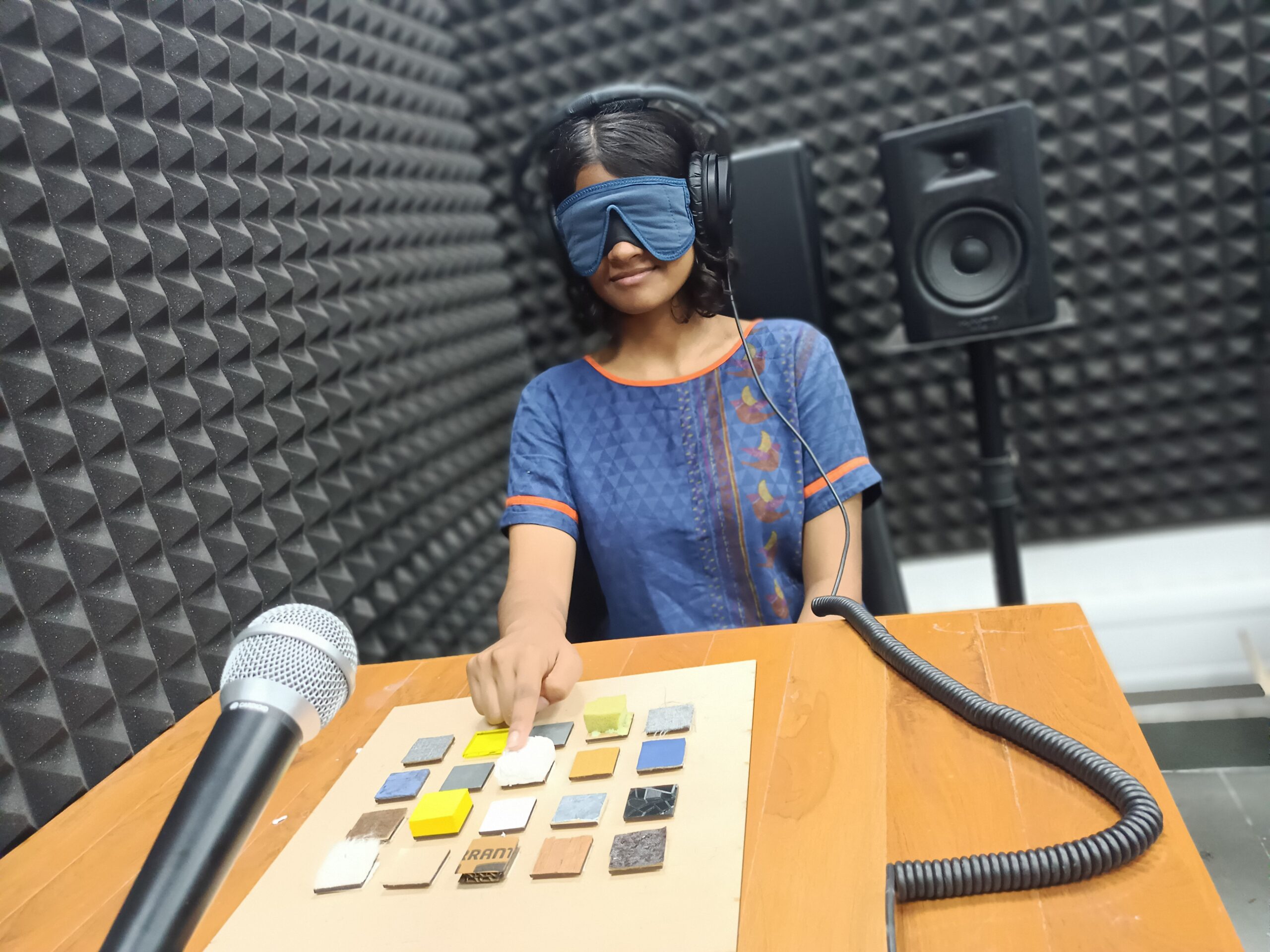Welcome to the TaPer Lab (Tactile Perception Lab). We are located at the Center for Cognitive and Brain Sciences at IIT Gandhinagar. We study the cognitive and neural mechanisms of human tactile perception.
Humans perform a remarkable range of tactile behaviors; we can take out the correct key from our pockets, differentiate between different kinds of silk sarees, and grip an egg as easily as gripping a cricket ball. However, all the mysteries of the tactile system are not very apparent and so not fully appreciated. Phenomenologists say touch perception gives rise to the feeling of being. In contrast, other senses depend on the tactile sense for the sense of being to operate. It is the only sense that can function as sender and receiver (the hand can touch itself). Thus, touch enjoys a “primacy” among all the senses.

The goal of the lab is to deepen our understanding of the cognitive processes and neural underpinnings of human tactile behavior. Broadly, we are interested in understanding multimodal tactile perception, categorical perception, plasticity and learning in the tactile system. We use various techniques such as human psychophysics, EEG, tDCS and TMS to answer exciting research questions (some are listed below).
Although we are grounded in techniques and theories in cognitive neuroscience, we aspire to be a space where ideas about touch and tactile perception from different disciplines can intermingle. We collaborate with designers and architects to gain a holistic understanding of how the tactile sense works in society, built architecture, online environments and in VR/AR. Do email us if you are interested.
Multisensory Perception
How do we perceive a similarity between percepts between two senses? Helmholtz famously said that one cannot compare perceptions of two modalities, but there are near universal crossmodal correspondences like the bouba-kiki effect. Do they occur because of an underlying perception of similarity, as Amos Tversky says? We are interested in answering such questions by studying feature-based and holistic correspondences between tactile and sound stimuli in normal and blind populations.
Bulusu, V., & Lazar, L. (2024). Perception, 53(4), 219-239.
Kottu, S. R., Pawar, . T. S., Jani, S., and Lazar, L. Lack of Haptic-Sound Symbolism in a Congenital and Late Blind Population. (2024) Scientific Reports (Under Review)
Body Representations and their Functions
Cognitive maps that represent the various features of the body are presumed to be represented in the brain. The famous S1 (homunculus) map represents touch on the surface of the body. But we need more information than just his map to perform tactile functions. The body model is a hypothetical map representing the metrics of the body (length of the finger, width of the shoulder, etc.). We are interested in the dynamics of this body model, its neural representation, and how it works.
Kottu, S. R., and Lazar, (2024). Cortex .
Tactile Hallucinations in Schizophrenia
One of the most troubling symptoms of schizophrenia is the perception of sensory hallucinations. Tactile hallucinations, which manifest as perceiving phantom touch, which is perceiving touch when there are no physical stimuli, is a troubling experience. In collaboration with Dr. Venkat Balasubramanium in NIMHANS Bangalore, we are developing methods to study the phenomenology of tactile hallucinations in Schizophrenia patients. We are also studying the underlying mechanisms (strong priors) in conditioned hallucination experiments in non-clinical populations.
Embodiment of Tools
Handheld tools like pens and screwdrivers are integrated into the somatosensory system effortlessly. We want to understand how these tools are able to integrate into the body representations. How does training with tools influence the dynamics of different body representations? How are people able to work “through” the tools, enhance productivity and creativity?
Interactive Tools for Teaching Neuroscience
In collaboration with designers and artists, we are interested in developing new tools to think deeply about neuroscientific data and concepts. We had developed an interactive website to delve into the complex data set of neuronal numbers across different animal brains (Collaborator: Prof. Venkatesh Rajamanickam, IDC, IIT Bombay)
Neurons (info-design-lab.github.io)
Tactile experience in Architecture
Juhani Pallasmaa’s idea of “hapticity” in understanding the perception of the built environment is an entry point for thinking about the primacy of tactile/haptic experiences in complex multisensory experiences. Many architectural theorists use the body as a lens to understand experience in spatial environments. We are interested in theoretical engagement with theories such as modern cognitive science theories of multimodal perception, extended touch, enactive perception, embodied cognition, etc.
The Body in Spaces: Multimodal Tactile influences in the Experience of Architecture. Multimodality and Society 2023 (Under Revision)

